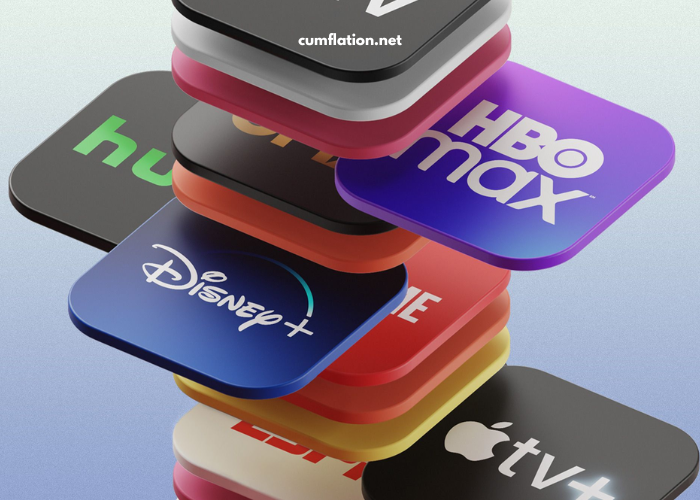
In the last two decades, the entertainment landscape has undergone a massive transformation. One of the most prominent drivers of this shift is the rise of streaming services. Gone are the days when consumers had to rely on cable television or physical media like DVDs and Blu-rays to access movies, TV shows, and other forms of entertainment. Today, streaming platforms such as Netflix, Amazon Prime Video, Disney+, Hulu, and others are revolutionizing how content is consumed, creating a new era of on-demand entertainment.
This article explores how streaming services are changing entertainment, focusing on aspects such as content consumption patterns, the impact on traditional media, and the cultural and technological shifts resulting from this change.
The Shift to On-Demand Consumption
Accessibility and Convenience
One of the most significant ways streaming services have changed entertainment is by making it more accessible and convenient. In the past, television programming was often dictated by broadcast schedules. Viewers had to tune in at specific times to catch their favorite shows or films, a concept known as “appointment viewing.” With streaming services, this all changed. Now, content is available on-demand, meaning users can watch whatever they want, whenever they want, and from virtually any device with an internet connection.
Streaming platforms have given viewers the freedom to curate their own viewing experiences. They no longer have to wait for a show to air on a particular network or purchase physical media to own movies. Instead, all they need is a subscription to a streaming service, and they have instant access to thousands of titles across genres, languages, and formats.
Multi-Device Viewing Experience
Another key benefit of streaming services is the ability to consume content across multiple devices. Whether you’re at home, on the go, or traveling, you can easily switch between watching on your smartphone, tablet, laptop, smart TV, or gaming console. The flexibility and seamless experience provided by these platforms cater to the modern viewer’s busy lifestyle, making entertainment an anytime, anywhere experience.
Global Reach and Availability
Streaming platforms have also opened up new markets and regions. While traditional media like cable TV and cinema have often been confined to specific regions, streaming services can be accessed globally. This accessibility has not only increased the reach of content but has also allowed international audiences to discover and enjoy content from other parts of the world. A show created in South Korea, for example, can quickly become a global phenomenon, thanks to platforms like Netflix, which offer subtitles and dubbing in multiple languages.
The Impact on Traditional Media
Decline of Cable TV
Cable television, which for decades was the dominant form of entertainment in many households, has seen a significant decline in subscribers. With the advent of streaming services, viewers are increasingly cutting the cord. In fact, a growing trend called “cord-cutting” refers to the decision by consumers to cancel their cable subscriptions in favor of online streaming.
Streaming platforms offer more flexibility, affordable pricing, and an extensive content library that cable TV often struggles to match. Additionally, many streaming services offer original programming that cannot be found on traditional networks, making them even more appealing to viewers.
The End of the Movie Theater Monopoly?
Streaming services have also started to challenge the dominance of movie theaters. While theaters still play a crucial role in the movie industry, streaming platforms like Netflix, Disney+, and Amazon Prime Video have begun releasing original films that bypass traditional cinema screenings entirely. Some high-profile films are now being released directly to streaming services, either exclusively or in addition to a limited theater run.
This shift has been accelerated by the COVID-19 pandemic, which forced movie theaters to close temporarily and prompted studios to reconsider the release strategy for their films. Some major studios have adopted a hybrid model, where movies are released simultaneously in theaters and on streaming platforms.
Disruption in the Television Industry
In addition to challenging cable TV and cinema, streaming services have had a significant impact on the television industry. Traditional broadcast and cable networks no longer hold the monopoly on prime-time TV slots. Streaming platforms are now producing their own high-quality, binge-worthy original content, such as Netflix’s Stranger Things and Amazon Prime Video’s The Boys.
These shows have garnered massive fanbases and have put pressure on traditional TV networks to adapt. In response, many networks are launching their own streaming services, like NBC’s Peacock, HBO Max, and Paramount+. This competition has forced networks to rethink their programming strategies, with more emphasis on exclusive content to attract subscribers.
How Streaming Services are Shaping Content Creation
Original Programming: A New Era of Content
The emergence of streaming platforms has dramatically changed how content is created and consumed. One of the biggest ways this shift is felt is through the rise of original programming. Before streaming services became a dominant force, most television and film content was produced by large studios or TV networks. Today, streaming services like Netflix, Hulu, and Amazon Prime Video are investing heavily in creating their own content, ranging from TV series to movies, documentaries, and even stand-up comedy specials.
The shift to original content has given rise to new opportunities for filmmakers, writers, and actors. These platforms often give creators more creative freedom than traditional networks, allowing for riskier, more experimental projects. For example, shows like The Crown (Netflix) and The Mandalorian (Disney+) have pushed the boundaries of storytelling, production value, and special effects, garnering critical acclaim and dedicated fan followings.
A Globalized Entertainment Industry
As streaming services expand internationally, they also encourage the creation of global content. In the past, Hollywood dominated the global entertainment market, with movies and TV shows produced primarily in English and tailored to American audiences. However, streaming platforms have democratized the industry by giving international creators a platform to showcase their work.
For instance, the popularity of South Korean dramas (K-dramas) has exploded globally, largely due to streaming services like Netflix. Shows like Squid Game and Crash Landing on You have garnered international audiences, opening the door for more diverse storytelling from around the world. This globalization of content has enriched the cultural exchange between countries and broadened viewers’ horizons.
Personalized Recommendations and Viewer Data
Streaming services leverage sophisticated algorithms and data analytics to recommend content based on individual viewing habits. This personalization has had a profound impact on content discovery. Instead of relying on traditional advertising or word of mouth, viewers now have tailored suggestions that match their preferences. The more a person watches on a platform, the better the algorithm becomes at predicting what they might enjoy next.
This data-driven approach to content recommendation also influences the types of shows and movies that get produced. Streaming platforms use viewer data to identify popular genres, themes, and storylines, which can inform future content creation. As a result, the industry is increasingly focused on what audiences actually want, rather than adhering strictly to traditional formulas.
The Future of Streaming Services and Entertainment
Competitive Landscape
As more companies enter the streaming market, the competition is expected to intensify. Major players like Netflix, Amazon Prime Video, and Disney+ will continue to dominate, but smaller platforms and niche services are likely to emerge as well. We may also see more bundling of services or partnerships, as companies look for ways to attract subscribers. For example, Disney+ has bundled its service with Hulu and ESPN+ to offer consumers a more comprehensive entertainment package.
The key to success for streaming services in the future will be their ability to innovate and differentiate themselves in a crowded market. Exclusive content, pricing strategies, and user experience will be crucial factors that shape the competitive landscape.
Technological Advances and Streaming Quality
The technology behind streaming services continues to evolve. As internet speeds improve and data compression technologies advance, the quality of streaming content will become even better. Consumers can expect to see more content in 4K and even 8K resolution, along with immersive sound technologies like Dolby Atmos. The rise of virtual reality (VR) and augmented reality (AR) could also influence how entertainment is experienced in the future, allowing for more interactive and immersive content.
The Role of Artificial Intelligence and Automation
Artificial intelligence (AI) and automation will play an increasingly important role in shaping the future of streaming services. AI can be used to improve content recommendations, personalize user experiences, and even assist in content creation. Automation tools could streamline production workflows, making it easier for content creators to produce high-quality material at a faster rate.
Subscription Fatigue and the Shift to Ad-Supported Models
As the number of streaming services grows, consumers may experience “subscription fatigue.” The cost of subscribing to multiple platforms can quickly add up, leading some viewers to reconsider their choices. To address this, many streaming platforms are experimenting with ad-supported models, offering a lower-cost or free tier in exchange for viewing advertisements. This shift could make streaming more accessible to a broader audience, while still allowing services to generate revenue.
Conclusion
The rise of streaming services has fundamentally changed the entertainment industry. From providing unparalleled convenience and flexibility to reshaping how content is created, distributed, and consumed, streaming platforms have ushered in a new era of on-demand entertainment. With the continuous growth of these services and the increasing competition between them, the entertainment landscape will likely continue to evolve in exciting and unpredictable ways.
As technology advances, streaming services will become even more integrated into our daily lives, offering more personalized, immersive, and diverse content. Whether through new content creation models, technological innovations, or the evolution of business strategies, one thing is clear: streaming services are at the forefront of the entertainment revolution, and they are here to stay.




